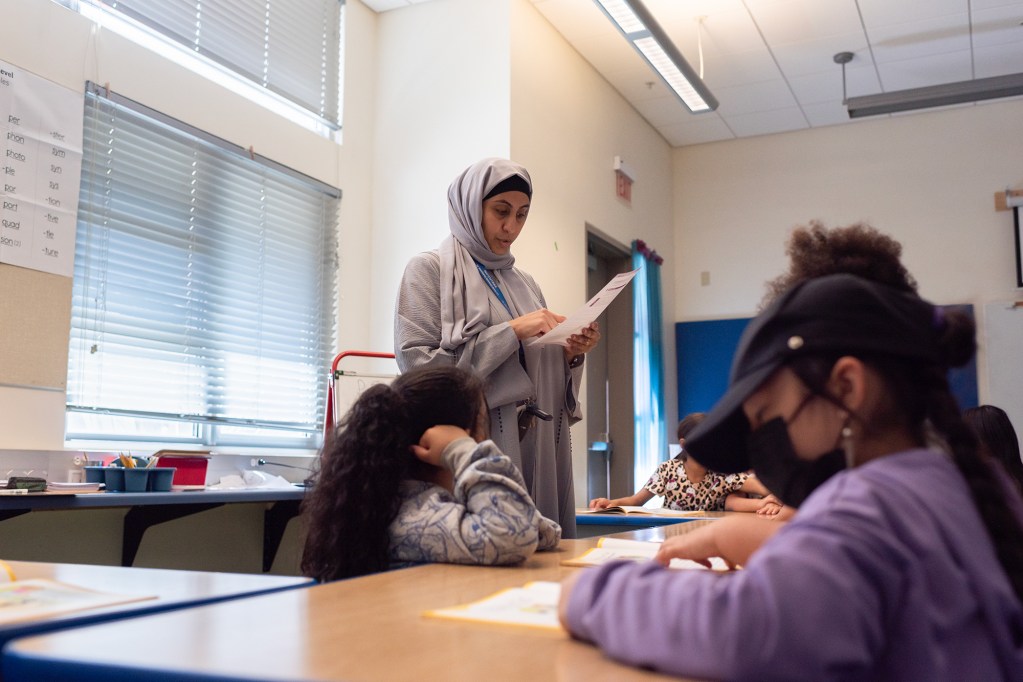Dear California Reader,
Good morning, Inequality Insights readers. I’m environmental equity reporter Alejandra Reyes-Velarde.
California is facing another fall heat wave this week, and schoolchildren across the state are sweltering in hot classrooms as districts struggle to keep up with air conditioning system repairs.
In coastal areas like Long Beach and Oakland, some classrooms don’t have air conditioning at all because they are in schools built before global warming raised temperatures along California shores. In inland regions, like the Central Valley and Inland Empire, classrooms have air conditioning, but common spaces like gyms and cafeterias may not. And across the state, air conditioning systems are aging and breaking down and schools can’t keep up with the repairs.
That makes for dangerous conditions in classrooms as California heat waves intensify.
I spoke to parents and teachers about their experiences with hot classrooms for a story we published this week about the state’s school air conditioning woes.
In Oakland, I talked to middle school students in a hot and stuffy classroom at Melrose Leadership Academy.
“For me it’s a lot harder to focus on what I’m doing,” 8th grader Juliette Sanchez told me. “Like right now, I’m sticking to the table. It’s uncomfortable to write. My arm is sticky and I’m just hot.”
Another student, Lyra Modersbach, said her school has just a few portable air conditioning units that shut down if they’re all used at once.
The heat “is very distracting,” Lyra said. “I’ve noticed having a harder time getting my work done or feeling frustrated.”
The most jarring story I heard was from a San Fernando Valley mother, Veronica Chin, who said her daughter was diagnosed with heat exhaustion after a whole day sitting in a classroom with a broken air conditioning system.
Lilian Chin, a fifth grader in the Los Angeles Unified School District’s Haskell Elementary STEAM Magnet, started feeling a headache as the temperature outside reached 116 degrees. She vomited in class and was sent to the nurse’s office. But the nurse was unavailable and Lilian was sent back to the hot classroom. After school, the 11-year-old vomited again and felt a leg cramp. Her mother rushed her to the emergency room.
Lilian recovered, but the situation could have been much worse. When not treated quickly, heat exhaustion can become life-threatening heat stroke.
LAUSD teachers also reported that they struggled to teach their lesson plans because they themselves felt headaches and lethargy. Research also shows that heat affects learning. According to one study, an increase in the average temperature of 1 degree leads to 1% less learning, measured by changes in test scores.
School districts said they would need tens of billions of dollars to upgrade their air conditioning systems. But funding is limited. A state program that has given schools more than $400 million to upgrade the systems has closed applications after legislators attempted to end the program.
On the positive side, Californians will have a chance to vote for a $10 billion school infrastructure fund to help schools upgrade their facilities, including air conditioning systems.
Read more about the issue in my story.
DON’T MISS
Toxic waste. Authorities have accused the metal recycling plant S&W Atlas Iron & Metal of exposing students at Jordan High School in Watts to explosions, hazardous waste, and lead levels 75 times higher than those deemed safe by the U.S. Environmental Protection Agency. The LA Times reports on a 25-count indictment charging the company and its owners with 23 felonies related to disposal of hazardous waste and two misdemeanors related to failure to minimize the risk of explosion or fire. The defendants pleaded not guilty.
Undocumented aid. Gov. Gavin Newsom vetoed a bill that would have provided undocumented immigrants with unemployment benefits. He earlier vetoed measures to allow them to apply for homeowner aid and for undocumented students to work on campus. CalMatters’ Jeanne Kuang reports on how political analysts say he’s playing it safe on a hot-button issue, just as Democrats on a national level swerve right on immigration in an election year.
Tenant protections. A new California law gives tenants more time to respond to eviction notices. Tenant advocates say giving renters 10 days to respond to eviction notices, up from 5, will help those who live in rural areas and have trouble finding legal help. Some landlords argue it will increase their costs, California Divide reporter Felicia Mello writes.
For-profit colleges. Elite universities, including CalTech, are marketing career-training boot camps to low-income students — but they’re often run by for-profit companies that some students accuse of failing to deliver the quality education they promised, the New York Times reports.
Black maternal health. Newsom signed into law a piece of legislation aimed at reducing racial and ethnic disparities in maternal and infant healthcare outcomes. The bill, written by Assemblymember Lori Wilson, will expand and strengthen implicit bias training for healthcare providers in California. It was part of a priority package from the California Legislative Black Caucus and the California Legislative Women’s Caucus.
Affordable housing. Housing Trust Silicon Valley, a nonprofit community loan fund, announced on Wednesday a $30 million donation from philanthropist MacKenzie Scott through her Yield Giving philanthropic fund. The money will go toward creating affordable housing opportunities in the Bay Area.
Silicon Valley food stamps. Participation in CalFresh is at its highest level in a decade in Santa Clara County. The San José Spotlight reports on a growing food crisis in one of the most affluent areas of the state.
Thanks for following our work on the California Divide team. While you’re here, please tell us what kinds of stories you’d love to read. Email us at inequalityinsights@calmatters.org.
Thanks for reading,
Alejandra and The California Divide Team

